Marine Life Identification Perth WA
Shore Diving
Sharks & Rays
Sharks (superorder Selachimorpha) are a type of fish with a full cartilaginous skeleton and a highly streamlined body. The earliest known sharks date from more than 420 million years ago... (Wikipedia)
(Rays) Batoidea is a superorder of cartilaginous fish commonly known as rays and skates, containing more than 500 described species in thirteen families. They are closely related to sharks, from which they can be distinguished by their flattened bodies, enlarged pectoral fins that are fused to the head, and gill slits that are placed on their ventral surfaces... (Wikipedia)
---------------------------------------------------------------------------------------------------------------------------------------------------------------------------
Port Jackson
(Heterodontus portusjacksoni)
Port Jackson Sharks are my favourite little guys, I love them, the markings are so beautiful and they look so dignified.
Top two photographs taken at Robbs Jetty in about 3 - 4 meters of water on the way out from the dive site.
The next two taken on a night dive at Ammo Jetty again only in a few meters of water as we were finishing the dive.
Take a look at the video section for Robbs Jetty and the video for Ammo Jetty in the Night Crawler section of this website.
The Bottom four photographs taken at MAAC, with the Port Jackson hiding in the gloomy corners under a ledge.
I was just about to swim away as I was taking photographs of other fish (see bottom two photographs) and just out of the corner of my eye I saw the tail sticking out from the shadow. You can clearly see them here but without a torch or strobe these Fish where well hidden.
No matter how hard I tried I could not get a decent side on photograph they were wedged in so well.
Big Thank You to Sharky Jones for donating these bottom two images of this mature Port Jackson.
Don't forget if you want to submit a photograph of the marine life you have encountered on your shore dives just follow these guidelines.....
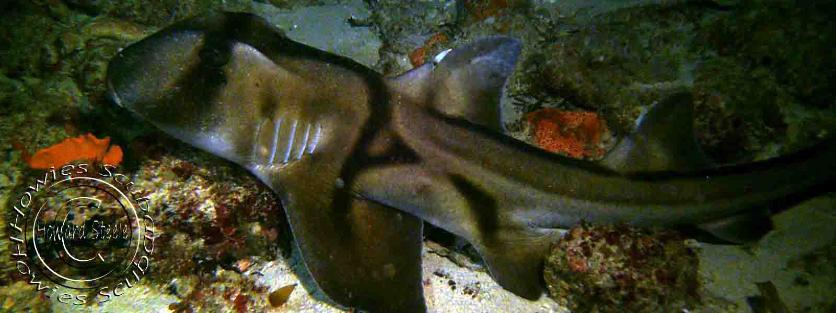
Australian Spotted Catshark
(Asymbolus analis)
On a night dive at BBR, just weaving in and out of the sea grass between the reef and the harbour wall is where this stunning little guy was photographed.
Apparently quite rare to see one of these due to its night time behaviour and hidden during the day.
Seen on a night dive at Point Peron, weaving in and out of the sea grass.
Unfortunately for me I had a terrible night with my dive torch, video light & strobe. But we still got something to show off.
In about 1.5 meters of water near the shore.
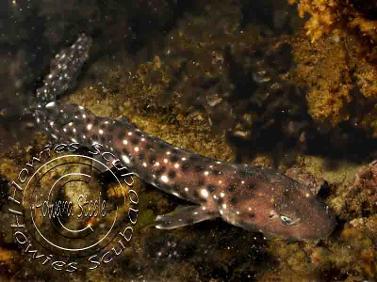
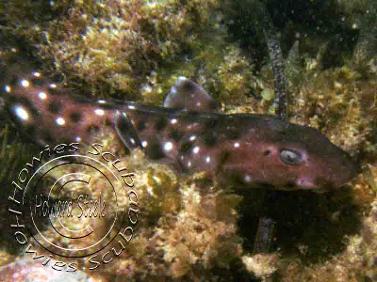
(Parascyllium variolatum)
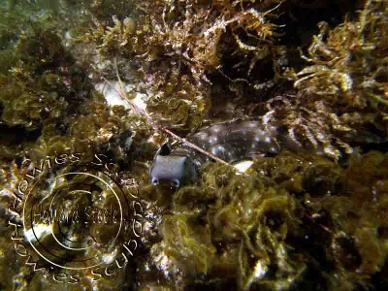
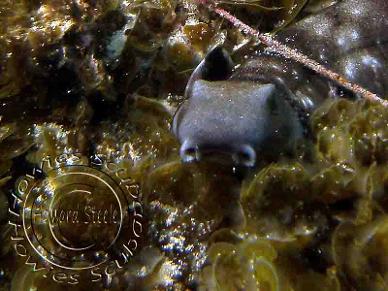
(Unknown type)
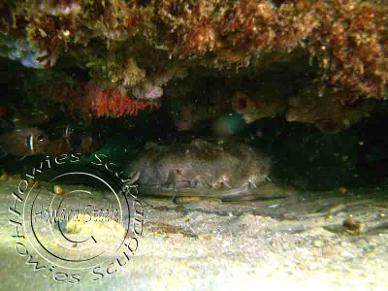
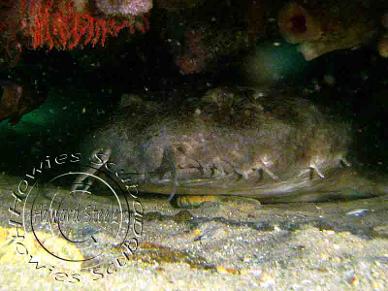
Blue Spotted - Southern Eagle Ray
(Myliobatis australis)
This photograph of the Southern Eagle Ray was taken at Robbs Jetty just as you descend at about 5 meters. It was sitting high on its fins but as soon as we descended it swam off. Hit the shutter button a bit sharpish and was fortunate enough to get this as it was leaving.
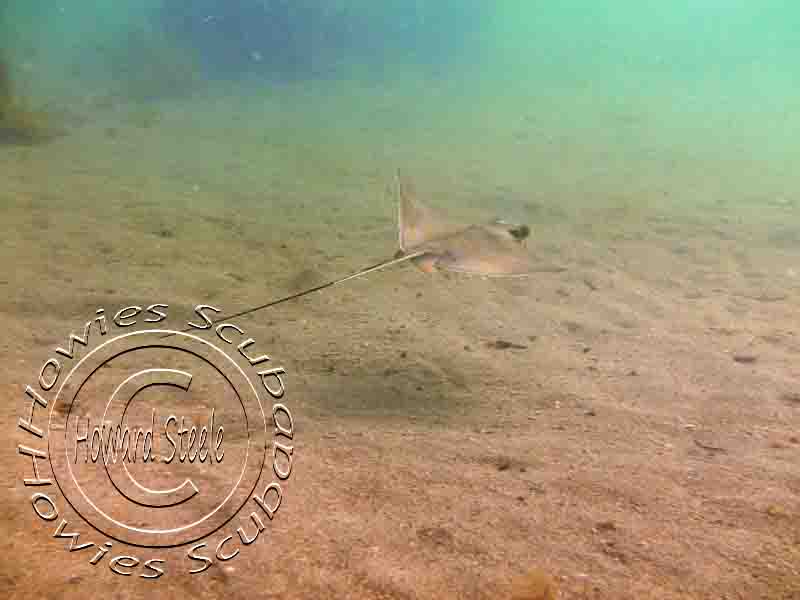
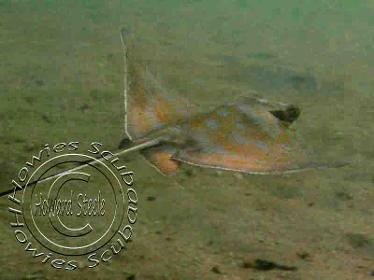
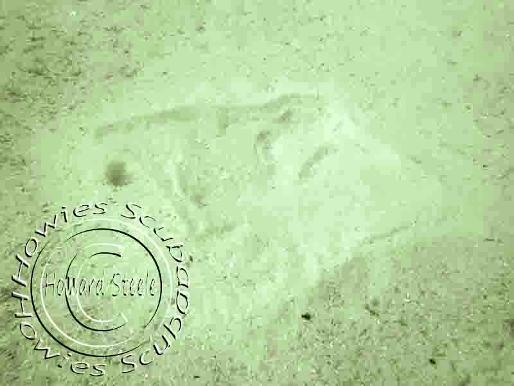
Smooth Stingray
(Dasyatis brevicaudata)
This stunning Stingray was photographed at Bird Isl. at Cape Peron.
Unfortunately I could not get closer to it as it gracefully coasted over the sand, over the reef and out of sight.
I am starting to feel a little cursed with these things this is the third opportunity I have had to get a nice photograph and again it has eluded me.
Nice a moment at Point Peron, this rather larger beasty circled myself and dive buddy a couple of times on the way back in.
It was being bombarded by a school of fish as it gracefully swam around us.
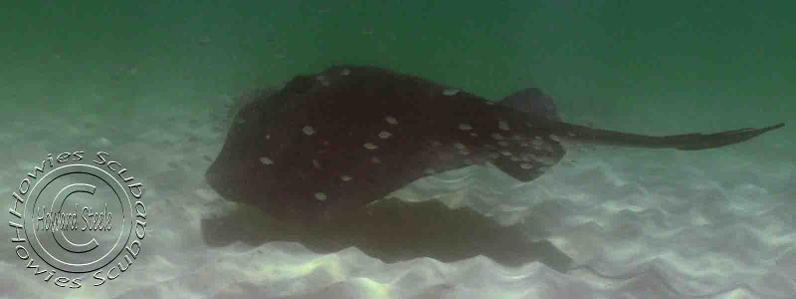
Bight Stingaree aka Striped Stingaree
(Trygonoptera ovalis)
These two Stingaree's where photographed at Bird Island whilst on a kayak dive which is in the Point Peron area, approx 600 meters off the shore of Cape Peron.
Second Set photographed at North Mole Gareenup Wreck and at the groin area by the Omeo Wreck Port Coogee.
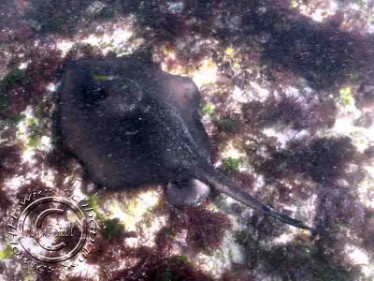
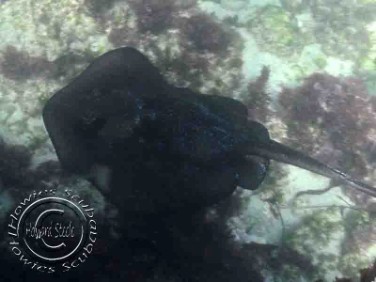
Masked Stingaree
(Trygonoptera personata)
Always had these two identified as colour variations on the previous Stingaree. Until I stumbled a cross a website that suggested differently and, once I checked it out, yep they were indeed the Masked Stingaree.
Photographed at Robbs Jetty and also on a night dive MAAC ?
Western Stingaree
(Urolophus mucosus)
Photographs 1 & 2 taken at Robbs Jetty, this was hiding underneath a tyre at the site and all that was a evident was its eye peering at me, it barely moved until I got to within 100 mm of it.
Photographs 3 & 4 taken on a night dive at Rockingham DT, this one was twice the size of the previous.
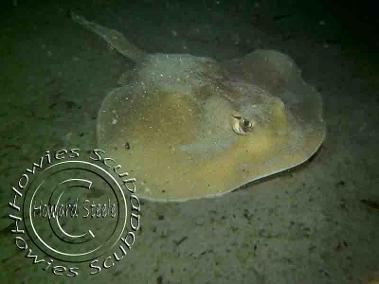
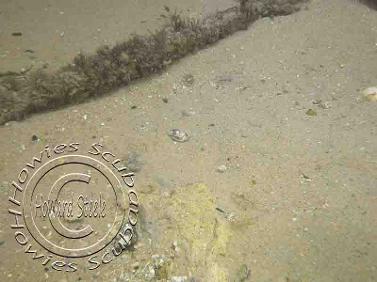
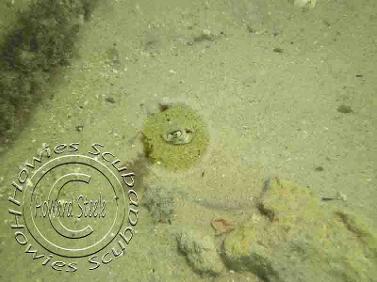
A fun moment at the Gareenup Wreck, I was photographing Cray's under the wreck when I this little twisty movement caught my eye.
This thing did not move once it realised we were watching it. Thought it would have popped up and flew off.
It took Mel Turner about a dozen attempts to see what I was pointing at.
(Urolophus gigas)
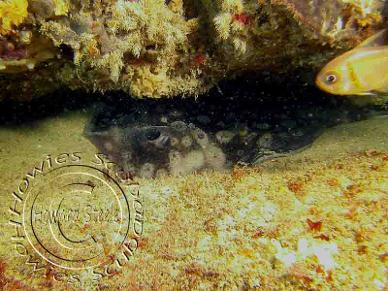
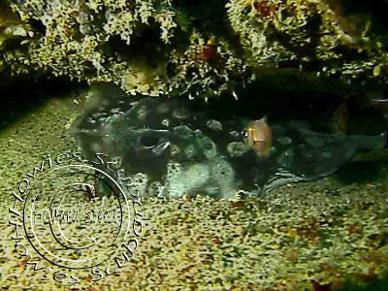
Western Shovelnose Ray
(Aptychotrema vincentiana)
This sweet little Shovelnose was seen just on twilight at Robbs Jetty in approx. 1.5m of water.
Buddies have seen larger specimens at Bulk Jetty being approx. 1m in length, which is likely to be a fully matured Shovelnose.
Photographs 5 & 6 taken in nearly the identical spot during a day dive about 3 months after the original four above were taken.
This time the Shovelnose Ray must have been twice the size. For all I know it could of been the same one, the marking are remarkably similar, that said, they could be on all Shovelnose rays.
Its just careless and lazy littering that is now slowly cutting into this rays head.
We did try and catch it to cut the line but after the first unsuccessful attempt it kept its distance.
Taken on a night dive Ammo.
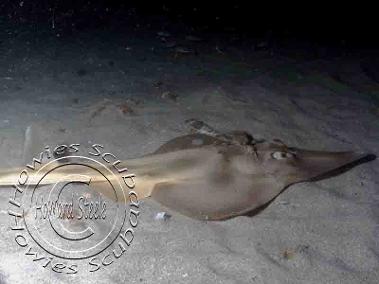
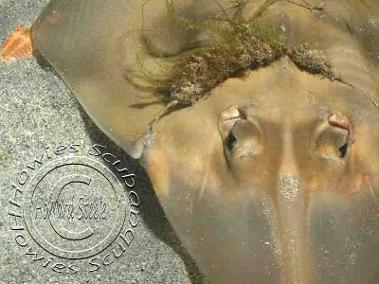
Southern Fiddler Ray
(Trygonorrhina dumerilii)
Photographed on a night/twilight dive @ Robbs Jetty.
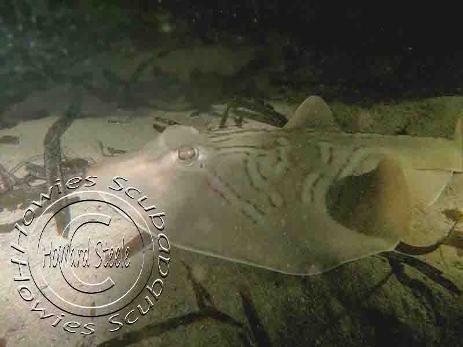
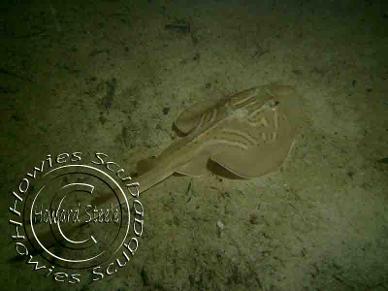
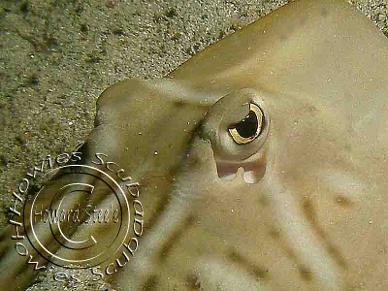
"The Giant Dive"
Catch of the Day
Coffin Ray aka Numbfish
(Hypnos monopterygium)
In December 2012 we arranged a charity dive for the Leukaemia Foundation called The Giant Dive which took place at Point Peron.
Even though I didn't find anything on the treasure hunt I was absolutely thrilled when Rhiannon found this little guy.
Just to let you know Coffin Rays produce an electrical current as a means of stunning its prey and will happily discharge this current if you try and touch.
Like all Rays they will bury themselves in the sand so be careful when setting down, if you are not all you will know about it is a massive shock which has been known to be strong enough to render people unconscious.
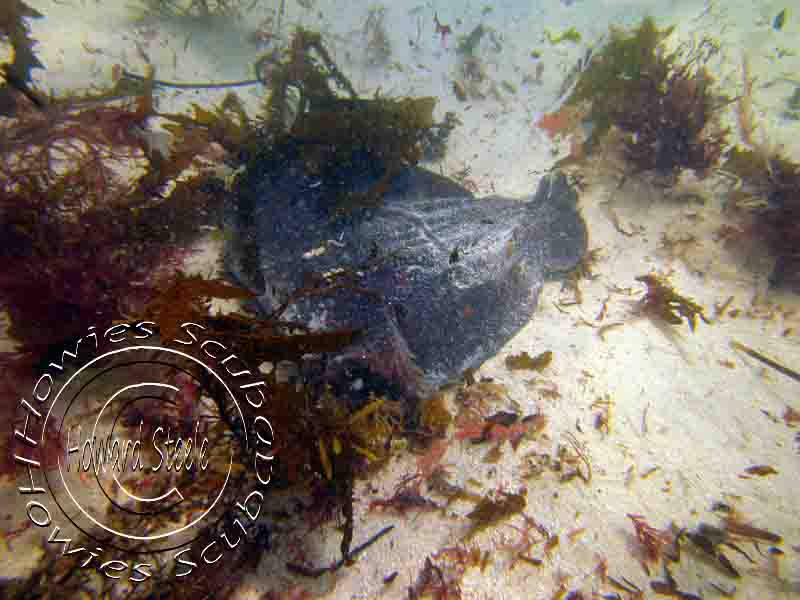
Video
IF YOU'RE NOT GOING DOWN: THEN WHERE THE HELL ARE YOU GOING